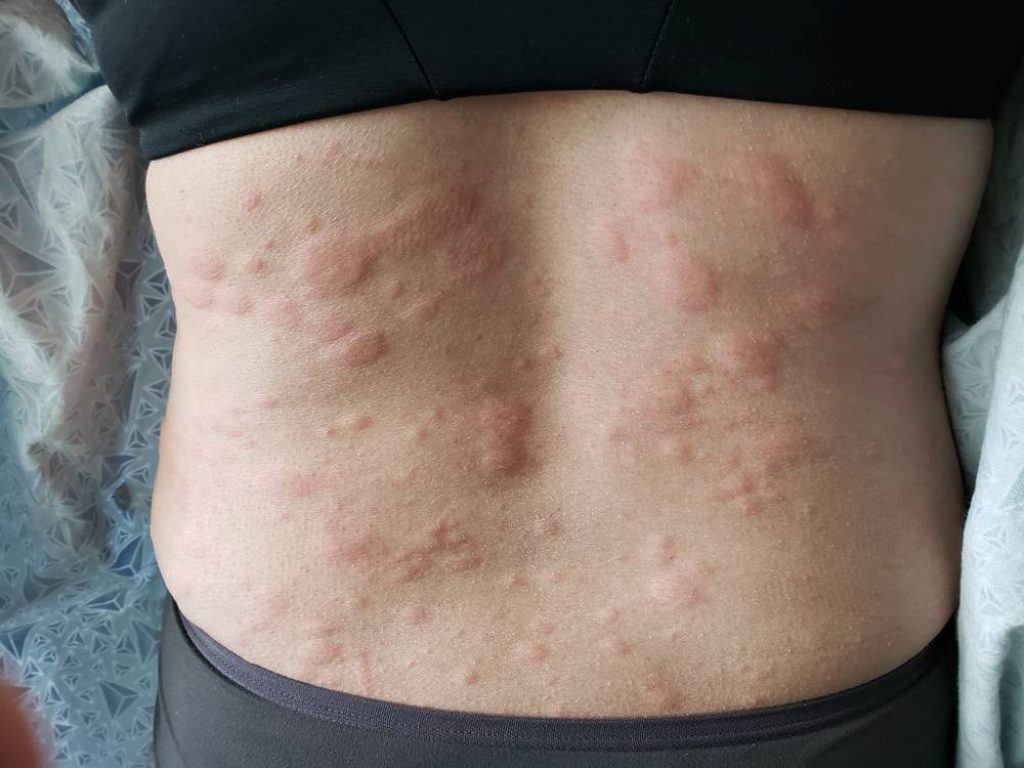
Warning Signs Of Angioedema
Angioedema is an inflammatory skin condition that causes swelling and discomfort in the inner dermal layer of your arms, legs, face, or sometimes the genital area. It usually strikes suddenly, and is most often an allergic reaction to certain foods, cleaning chemicals, powders, pollen, perfumes or venomous insect bites.
Related Topics (Sponsored Ads):
Angioedema and hives often go together hand in hand. Other types of Angioedema include- Hereditary, Idiopathic, Non-allergic drug reaction, Vibratory, and Acquired C1 inhibitor deficiency. All the types share certain symptoms and range in severity, and they are rarely life threatening. The varying symptoms are generally mild enough to dissipate on their own within hours or days without any medical intervention. Anyone at any age can have Angioedema, and it’s estimated that 20-25% of Americans will have at least one Angio attack in their lifetime.

Important Info About Angioedema
There is no definitive way to pinpoint exactly what spurs on an Angioedema episode right away, because the triggers are vague and differ from person to person. In the case of an airborne allergen, antihistamines or steroids are a must. Otherwise, the only way to discover the culprit is through a process of trial and error- keep a diary of what you eat, medications you take, what you wear and what you expose your skin to everyday, then jot down if you had any symptoms or not. It may seem like an exhausting hassle, but it’s definitely worth the effort in the long run. There are also tests available to determine what kind of Angio you have.
Listed below are some more of the top warning signs of Angioedema to watch out for.
Swelling On The Face, Hands Or Feet
The hallmark symptom of angioedema is swelling and puffiness of the eyes, cheeks or lips. It may also affect the hands, feet or legs, and less often may involve genitalia. Swelling can develop in the throat and tongue as well, and this can affect breathing or eating due to physical obstruction of the airway and food pipe. The swelling is not pitting, meaning that you cannot produce an indentation in the puffy area by pressing on it.
Rashes, Redness And Patchy Welts
Redness can accompany the swelling, or it may appear on its own. You may notice small spots or patchy areas that may be raised or flat. It may appear anywhere on the body, including areas that are not swollen, but most often affects swollen areas. The redness is often blanching, which means that it briefly becomes pale when you press on it, but then returns to red again within a few minutes.
You may also develop a rash, which may appear as small bumps or flat areas clustered together. It can develop anywhere on the skin and is usually reddish as well. You can also develop patches of slightly raised skin, usually reddish or pink in color. These patches are often described as welts.
Dizziness And Upset Stomach
You may experience a sense of mild to moderate dizziness or lightheadedness that accompany the skin changes of angioedema. This occurs due to a change in blood pressure. If you experience the dizziness without the physical and visible skin symptoms, then it’s likely not angioedema.
You may also experience stomach discomfort or nausea as well, due to a swollen digestive tract. Regarding this symptom, it sometimes occurs together with other symptoms of allergy or hereditary angioedema; other times it occurs by itself without other symptoms.
Burning And Tingling Sensations
Tingling or another non-painful sensation can accompany the swelling of angioedema. A mildly painful burning sensation may also occur with angioedema, particularly on the swollen areas of the body.
Diarrhea
Although this symptom is less common than the other known symptoms, mild diarrhea can potentially accompany other symptoms of angioedema. This happens as a result of swelling of the digestive system. It is especially rare for diarrhea to be the only symptom of angioedema, but this does sometimes occur.
Shortness Of Breath
Although it’s rare, the swelling of the tongue and throat which leads to shortness of breath and difficulty breathing can be lethal if not treated right away with a shot of epinephrine. If you experience shortness of breath or feel that you cannot breathe, this could get worse very rapidly. If this happens and you don’t possess any epinephrine, you must call for emergency help right away.
Final Thoughts
Common triggers of Angio include milk, eggs, nuts and shellfish. During an Angioedema attack, the tongue and throat might swell up and obstruct the airway and food pipe, making it difficult to eat and breathe.<p. In these extreme cases, it can be fatal and requires immediate emergency medical attention. People who chronically suffer from this severe and dangerous kind of Angioedema should always carry epinephrine injections with them just in case.




